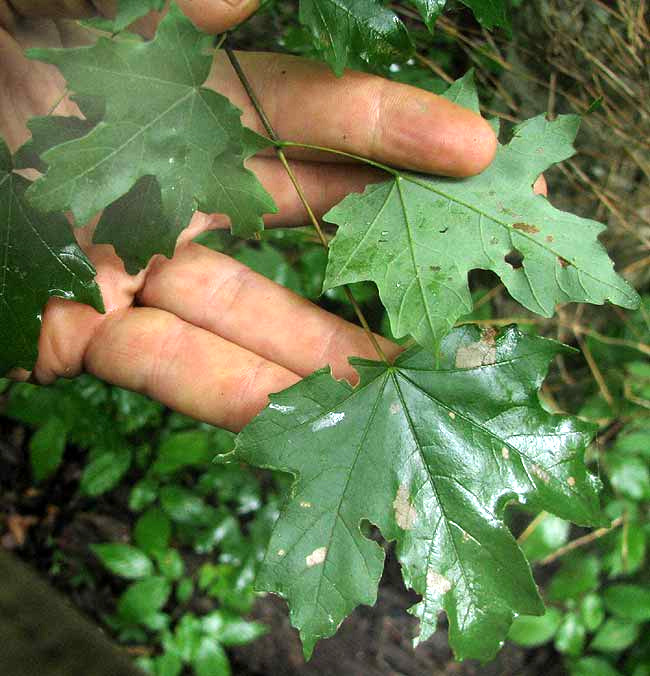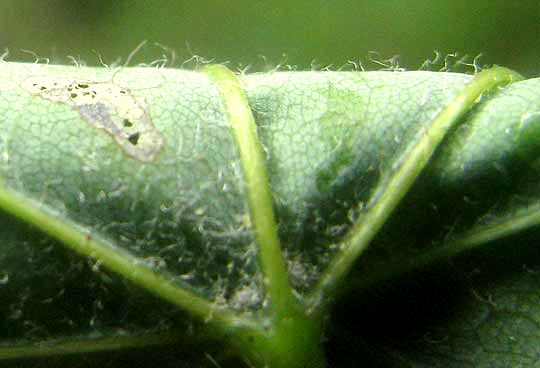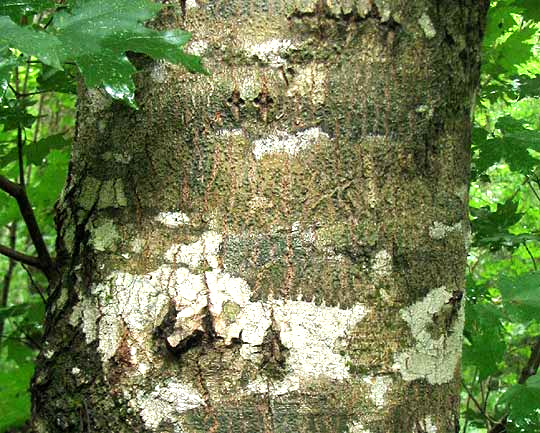Excerpts from Jim Conrad's
Naturalist Newsletter

from the July 15, 2012 Newsletter issued from the woods of the Loess Hill Region a few miles east of Natchez, Mississippi, USA
SOUTHERN SUGAR MAPLE
Growing up in rural Kentucky I was very familiar with the Sugar Maple, the same species from which maple syrup is processed in the US Northeast and Canada. Sugar Maples line the streets of many little towns up there, breaking your heart with their loveliness on sunny October afternoons. Sugar Maples aren't native this far south, however, mostly petering out in the southern Appalachians of eastern Tennessee and western North Carolina. Knowing all that, the other day on a dry loess ridge near the trailer I was tickled to see what's shown above.
Northerners familiar with their maples will recognize that this isn't a Red or Silver Maple, but there's no reason why it couldn't be the Sugar Maple -- except, maybe, that its leaves are a bit smaller than usual. In fact this is the Southern Sugar Maple, ACER FLORIDANUM, in older books listed as Acer barbatum, and sometimes known as the Florida Maple. Southern Sugar Maples are endemic to the Southeastern US, spottily on the Coastal Plain and much of upland Arkansas. In southern Mississippi it's found here in the Loess Hills along the Mississippi River, for some reason avoiding the vast piney woods to the east.
It's clear that Southern Sugar Maples and northern Sugar Maples share common ancestors. However, there are notable differences. Northern Sugar Maple leaves average three to five inches across (8-13cm), while Southern Sugar Maple leaves are only 1.5-3 inches (4-8cm). Sugar Maple leaf undersurfaces are hairless, or bear hairs only along major veins, while Southern Sugar Maple leaves are hairy, as shown below:

The northern species can grow to 100 feet or so (30m) while Southern Sugar Maples seldom reach 60 feet (18m). You can see our Southern Sugar Maple's smooth, blotchy bark below:

The USDA's Silvics of North America describes Southern Sugar Maple's habitat preference as "fertile, moist but well-well drained soils on stream terraces, in coves, and on adjacent bluffs and ridgetops. It usually grows best on soils underlain by calcareous material such as limestone or marl." In our area it's uncommon and I've found it only on loess ridgetops. The loess is highly calcareous dust, so our trees must feel perfectly at home.
Maple syrup has been made from Southern Sugar Maples, but only to a very limited extent. The wood is as useful and pretty as Sugar Maple's, but its smaller, more shrubby form keeps it from being sought. In many southern towns it does perform the same street-tree service as its northern counterpart, displaying brilliant orange-yellow hues in the fall.